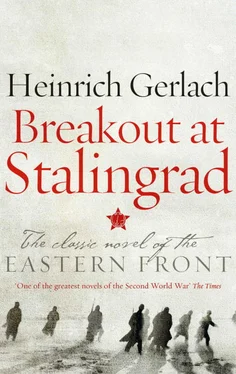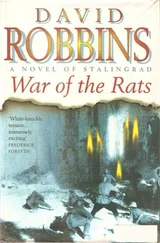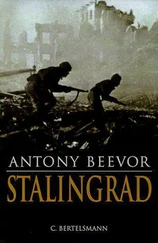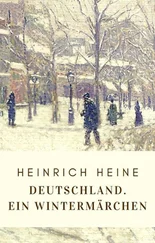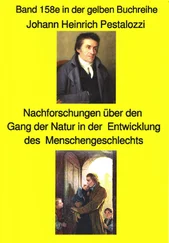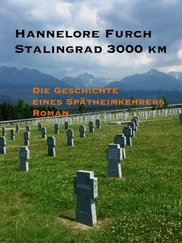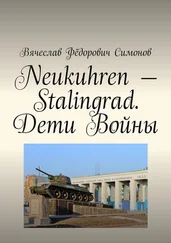Following the dissolution by Stalin of the Third Communist International (Comintern) in 1943, Institute 99 took over responsibility for the political education of POWs. To fill the most important posts in this organization, the Soviet leadership turned primarily to ‘tried and tested’ KPD (Communist Party of Germany) functionaries, all of whom Heinrich Gerlach got to know in Lunyovo. Walter Ulbricht played a key role, and it was he who would determine Gerlach’s fate. After 1945, Ulbricht came to occupy decisive positions of power, first in the Soviet Occupation Zone and then (after its inception in 1949) in the German Democratic Republic, as first secretary of the Socialist Unity Party (SED) from 1950 to 1973 and later as head of state (1960–73). All the other communist exiles whom Gerlach had dealings with were also appointed to senior posts in the Occupation Zone and the GDR post-1945.
Rudolf Herrnstadt, Anton Ackermann and Karl Maron were responsible for print media and radio broadcasting. The Free Germany radio station transmitted between fifteen and ninety minutes of programmes each day on various wavelengths. A typical day’s broadcasting comprised fifteen minutes of news, fifteen minutes reading out the names of those taken prisoner, and thirty minutes of original programming. Somewhat surprisingly for a communist broadcaster, the intermission signal followed the melody of an old patriotic student fraternity song from 1812 known as the Vaterlandslied (‘Song of the Fatherland’).
The editorial staff of the identically named newspaper, with Rudolf Herrnstadt as editor-in-chief, had much more work to do. Herrnstadt, an experienced journalist, had excellent contacts with the Soviet leadership. Before 1933, he had been a correspondent in Warsaw and Moscow for the Berliner Tageblatt , and in 1941 he emigrated to the Soviet Union, where from 1943 onwards, like so many other communist exiles, he lived at the Hotel Lux in Moscow. Karl Maron, Lothar Bolz and Alfred Kurella were also on the editorial staff of Free Germany . Gerlach subsequently worked with these communist exiles, clearly finding some of them more sympathetic than others. After his first meeting with Herrnstadt, he wrote that he exhibited ‘the aloof chilliness of a block of ice’. This was probably an accurate summation of the editor-in-chief’s emotional state at this time.
It must have been hard for someone like Herrnstadt, who had been involved in the resistance against Hitler from the outset, to now have to work alongside captured Wehrmacht officers. In her biography of her father, Herrnstadt’s daughter, Irina Liebmann, speculates how he must have felt: ‘If you look at photos from this period and see the German officers standing there in their jackboots and their military insignia – well, Herrnstadt knew full well what the outcome would have been if they’d encountered him on the other side of the front.’ In addition, like many other communist émigrés, Herrnstadt had undergone experiences in Soviet exile that he couldn’t talk about. Irina Liebmann quotes the photographer Eva Kemlein, who tells of her disappointment at meeting the German ‘émigrés from Moscow, whose arrival I’d keenly anticipated’: ‘When they arrived, they were like blocks of ice.’ But there was something else about Herrnstadt: in the Soviet Union, he couldn’t say anything about the ‘murder of his own group, the worst of all possible outcomes’: when they met, Gerlach had no idea that Herrnstadt had been the handler of the Berlin anti-Nazi resistance group known as the ‘Red Orchestra’ ( Rote Kapelle ), whose members were sentenced to death and hanged, along with the spy Ilse Stöbe, by a German war tribunal in December 1942. Gerlach took a very different view of Alfred Kurella, who proved to be ‘an educated and open-minded individual, who was prepared to discuss all aspects of life without the slightest prejudice’. Kurella could speak seventeen languages, translated Central Asian poetry into Russian and German, and was a great admirer of the writings of Romain Rolland, whose secretary he had once been.
Yet for all the distance between himself and his editor-in-chief, Gerlach found the atmosphere at Free Germany intensely stimulating. He wrote prodigiously, edited, and mapped out ideas for broadcasts. His first article, published in the 5 September 1943 edition of Free Germany , carried the title ‘War without People’ and examined the ‘campaign’ against the Soviet Union. The topics for articles in Free Germany were set by the editorial board and the contributions were discussed once they had been written. Gerlach gained great satisfaction from writing. After studying her father’s papers on the enforced collaboration between officers and communist exiles, Irina Liebmann wrote very appositely: ‘Under laboratory conditions, a rapprochement took place that was deeply absurd, but a rapprochement for all that. Herrnstadt’s memoirs contain remarkable vignettes of German officers in these exceptional circumstances. What bound them all together was a shared concern for Germany.’ If one examines the contributions to Free Germany in their entirety, which were the work of 274 authors in all, inmates of Lunyovo and of the officers’ camps at Krasnogorsk, Yelabuga, Oranki, Voikovo and Susdal, one finds oneself agreeing with Irina Liebmann’s impression: ‘How sad they are […] This comes across in the absence of rhetoric in all the articles, and in the welter of surprising details – a descriptive style that vanishes once the war is over.’
The staff of the newspaper were shocked when they were confronted with evidence of war crimes committed by the Wehrmacht. As early as 1943 – before the founding of the BDO – the Red Army, as it advanced west, was known to have found in Krasnodar vans that had been converted into mobile gas chambers. This was very disturbing news to the officers, who had not wanted to acknowledge systematic atrocities hitherto, preferring to regard them as exceptions. This conviction was seriously undermined when Major Karl Hetz, vice-president of the National Committee, told a group of officers at Lunyovo how such gas vans worked. Rudolf Herrnstadt was shocked to learn of this. After the BDO was formed, the editorial board decided that Hetz should be called upon to explain how he came to know about the gas vans. Accordingly, on 15 September 1943, just a few days after the formation of the League, an article by Major Hetz appeared in the paper under the headline ‘The Gas Van’. As Irina Liebmann noted: ‘This was the very first German newspaper article anywhere in the world on this form of crime.’ A few months later, the newspaper received a report by Lieutenant Bernt von Kügelgen about mass murders perpetrated against the civilian populace of Kiev. Cracks also began to appear in Heinrich Gerlach’s conviction that the German forces were ‘clean’. He recalled the winter of 1939–40 in Warsaw, when he saw SS officers mistreating a young girl who was selling stockings on the street. His driver had also once related to him an incident at a transit camp in Dubno, when five hundred Soviet officers were gunned down one night under floodlights. Gerlach was aware of how he had tried to assuage his conscience at the time by telling himself such things were exceptions, excesses committed in the heat of the moment. But after reading Kügelgen’s report he was forced to admit to himself: ‘It was organized from above, it was systematic.’ Finally, fifty years and more after the end of the Second World War, two travelling exhibitions organized by the Hamburg Institute for Social Research (in 1995–99 and 2001–4) brought public acknowledgement at last of the war crimes carried out by the Wehrmacht during the invasion of the Soviet Union.
Читать дальше
